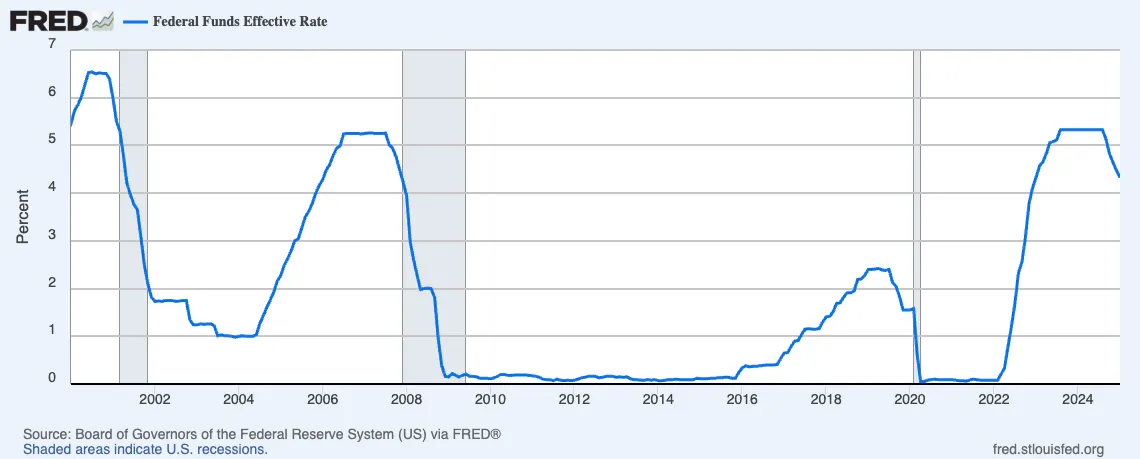How Treasury Bills and Money Market Funds React to Falling Interest Rates

The Federal Reserve adjusts interest rates as a primary tool to manage inflation, support economic growth, and maintain financial stability. Raising rates can cool inflation, and cutting them can help stimulate the economy.
There is growing pressure in 2025 for the Federal Reserve to reduce interest rates, and both market forecasts and Fed officials like Mary Daly view rate cuts later this year as likely. How the next few Federal Open Market Committee meetings unfold may determine whether the easing process begins soon or remains delayed.
The Relationship Between Interest Rates and Short-Term Investments
Rate changes have a direct impact on short-term and fixed-income instruments. When the Fed lowers rates, Treasury bill (T-bill) yields typically decline. Because T-bills are sold at auction and priced by market demand, falling rates drive up their value, benefiting holders.
Money Market Funds (MMFs) tend to react even more quickly. Since they invest in short-term instruments like repos, T-bills, and agency securities, their yields drop as existing holdings mature and are reinvested at lower rates. This pattern has played out in previous rate-cutting cycles, including the 2008 financial crisis and the COVID-19 response, when the Fed reduced rates to near zero, and both T-bill and MMF returns declined significantly.

Fed Funds Rate from 2000 to 2025. Board of Governors of the Federal Reserve System (US), Federal Funds Effective Rate, retrieved from FRED, Federal Reserve Bank of St. Louis; https://fred.stlouisfed.org/series/FEDFUNDS, February 7, 2025.
For treasurers and institutional investors, understanding these shifts is critical for managing corporate cash in anticipation of Fed moves. In this article, we’ll explore how T-bills and MMFs respond to declining rates, how their risk and liquidity profiles compare, and what that means for corporate cash management strategies in changing interest rate environments.
What Happens to Treasury Bills When Interest Rates Fall?
Relative Risk and Duration
T-bills are considered one of the safest investments because they are backed by the full faith and credit of the U.S. government. The shorter the duration, the lower the interest rate risk, as T-bills with shorter maturities are less sensitive to changes in interest rates.
Stable Yield
One key feature of T-bills is that they guarantee returns if held to maturity. When you purchase a T-bill, you know exactly what the return will be because they are sold at a discount and mature at face value. This provides predictability in returns, which is valuable in a low-interest-rate environment.
Behavior When Interest Rates Go Down
When interest rates fall, the yield on newly issued T-bills decreases. This means that new T-bills issued will offer lower interest rates compared to those issued before the rate cut. However, existing T-bills with higher interest rates become more attractive, causing their prices to rise in the secondary market. This price increase compensates for the lower yields on newly issued T-bills.
Treasurers holding T-bills to maturity are not affected by the fluctuations in the secondary market. They will receive the face value of the T-bill at maturity, thus locking in their yield at purchase regardless of changes in interest rates. This makes T-bills a stable investment option in terms of yield, especially for risk-averse treasurers.
Longer Duration T-Bills
Longer-duration T-bills (e.g., those with maturities of six months or more), as well as bonds and notes, are more sensitive to interest rate changes compared to shorter-duration T-bills. When interest rates go down, the price of longer-duration T-bills increases more significantly than that of shorter-duration T-bills.
For instance, a 6-month T-bill will have a more pronounced price increase compared to a 1-month T-bill when interest rates fall. This is due to the longer duration of the 6-month T-bill, which makes it more valuable in a declining interest rate environment. Conversely, when interest rates rise, the prices of longer-duration T-bills will decrease more significantly than shorter-duration T-bills.
What Happens to Money Market Funds (MMFs) When Interest Rates Fall?
Relative Risk
MMFs are investment vehicles that pool money from investors to purchase short-term, high-quality debt securities, such as T-bills, repurchase agreements, agency securities, and more. MMFs are considered a safe instrument, but may be subject to liquidity issues in extreme market conditions, as underlying securities may expose the fund to credit risks. This is why it's important for treasurers to properly evaluate MMFs before allocating corporate cash.
Stable Price
One of the main attractions of MMFs is their price stability. MMFs strive to maintain a stable Net Asset Value (NAV) of $1 per share. This means that the principal investment remains stable, making it a common option for treasurers seeking liquidity and capital preservation. However, the yield on MMFs is variable and can change with fluctuations in interest rates.
Behavior When Interest Rates Go Down
MMF returns can be influenced by changes in short-term interest rates. When interest rates go down, the yields on newly issued securities purchased by MMFs will be lower, resulting in reduced dividends.
While unlikely, the reduction in returns can cause an increase in redemptions. Why does this matter? Especially for smaller funds, fund managers may be forced to sell the most liquid assets first to meet redemption requests. That can leave remaining investors with a portfolio of longer-term or less liquid assets, which may reduce flexibility and impact returns. Fortunately, funds are required to impose redemption fees to help mitigate this risk and protect investors.
While MMFs provide stability and liquidity, their variable yields mean that returns can fluctuate based on market conditions, and yields aren’t “locked in” at the time of purchase like they are with Treasuries.
How Corporate Treasurers Can Navigate a Low-Rate Environment
Understanding how T-bills and MMFs respond to falling interest rates is essential for corporate treasurers looking to optimize their cash management strategies. While rates fluctuate over time and could shoot back up at any point, these two short-term cash vehicles react differently in a declining interest rate environment. T-bills provide fixed returns, therefore more value on secondary markets when rates begin to fall, while MMFs may adjust quickly to market conditions, making them more sensitive to rate drops.
Further reading

What is Even Safer Than a T-Bill Today? A T-Bill Tomorrow
Treasury Bills and the Debt Ceiling: A Look at Safety and Stability The US national debt is once again approaching the debt ceiling, reaching a point that forced Treasury Secretary Janet Yellen to take action and begin using extraordinary measures on January 21st. Read more →

How T-Bills Fit Into Corporate Treasury
Especially in today’s elevated rate environment, corporate treasurers are largely seeking its benefits while still maintaining liquidity and protecting principal. Read more →

A Guide to Properly Evaluating Money Market Funds Before Allocating Corporate Cash
Money Market Funds (MMFs) are one of the most widely used tools for managing short-term cash while earning short-term yield, but not all MMFs are created equal. With varying fund types, investment strategies, and levels of credit exposure, it’s critical to evaluate each option carefully. Treasurers need to ensure the fund they choose aligns with their organization’s cash strategy, risk tolerance, and operational needs. This guide outlines a structured approach to help you do just that.. Read more →